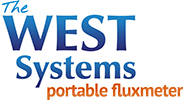Applied Geochemistry, a new paper has been published: “A multi-instrumental geochemical approach to assess the environmental impact of CO2-rich gas emissions in a densely populated area: The case of Cava dei Selci (Latium, Italy).
The paper is the result of the workteam of experts of the Institute of Geosciences and Earth Resources – National Research Council of Italy (CNR), the Department of Earth Sciences – University of Florence, the National Institute of Geophysics and Volcanology of Italy, the Department of Biological, Geological and Environmental Sciences – University of Bologna and WEST SYSTEMS.
Keywords: CO2 diffuse degassing, H2S, Air quality, Cava dei Selci, Colli Albani, Gas hazard
Highlights
- Natural gas emissions and air quality at Cava dei Selci were investigated.
- Processes in the soil affected diffuse emissions of endogenous gases.
- A mobile multi-instrumental station (MMS) was deployed for air quality measurement.
- H2S was the most impacting gas in the residential area.
- The MMS is a pivotal tool for managing future monitoring and intervention plans.
Abstract
The Colli Albani volcanic complex (Lazio, Italy) hosts areas characterized by anomalously high emissions of CO2-rich gases (e.g. Tivoli, Cava dei Selci, Tor Caldara, Solforata). The source of these gases is a regional aquifer within the Mesozoic carbonate rock sequences. These degassing zones release significant concentrations of H2S and other toxic gases (e.g. GEM: Gaseous Elemental Mercury, and Rn) and represent a serious hazard for local inhabitants, especially for those living at Cava dei Selci (near Rome, Italy), where the emitting areas are nested inside residential neighborhoods. In April 2016, a comprehensive geochemical survey was carried out in an abandoned stone quarry nearby the urban settlement aimed to: (i) investigate the gas composition from both punctual discharges and anomalously high diffuse soil degassing sites, and (ii) evaluate their environmental impact on the local air quality. The spatial distribution of the soil CO2 fluxes was mainly dependent on the local geostructural setting, whereas shallow secondary processes (e.g. oxidation and gas-water interaction) likely represent the main controlling factor on reactive and/or water-soluble gas species, such as CH4and H2S. The total output of CO2 from the abandoned stone quarry accounted for 0.53% of total CO2 discharged from the whole Colli Albani volcanic district. The naturally emitted toxic gases (e.g. CO2, H2S, CH4, GEM) largely affect the air quality and pose a serious threat for the health of the local residents. A mobile multi-instrumental station able to continuously and simultaneously acquire CO2, H2S, SO2, CH4, GEM and CO was deployed to verify the concentrations of both the main deep-originated gas compounds and potential secondary gaseous contaminants (i.e. SO2) around and inside the urban settlement most exposed to the lethal gases. Hydrogen sulfide was found to be the most impacting gas, occasionally exceeding the 24-h air quality guideline for ambient air and causing odor annoyance at a distance up to more than 250m downwind from the emitting area. In poorly ventilated basements, toxic gas accumulations up to hazardous levels were measured, producing anomalous outdoor air concentrations at the street level in front of the descending vehicular access to private garages and relatively far from the main emitting area. The geochemical survey, carried out via mobile station and soil gas measurements, resulted to be particularly efficient for evaluating the potential effects caused by gas emissions in inhabited areas. The multi-measurement approach adopted in the present study is of paramount importance for managing future urban development plans.







